The Bid-Ask Spread [partII]- Steemit Crypto Academy-S4W3- Homework post for @awesononso
Hello guys,
With a joy-filled heart, I humbly welcome you to the second lecture of the best Prof @awesononso in this new season, Season4.
This lecture happens to be the lecture of the 3rd week of this season, and in this lecture, we will continue our exploration of the bid-ask spread and this time, we will drive deeper into it.
Before proceeding to our tasks as usual, let's just take a little revision;
BID PRICE: This is the highest price/amount that a consumer is willing to pay for a commodity.
ASK PRICE: This is the lowest price that a trader is willing to sell a commodity.
BID-ASK SPREAD: This is the difference between the Bidprice of a commodity and it's ask price.
Having gone through a little revision, let's proceed to the main task of the week.
DEFINE ORDER BOOK AND EXPLAIN ITS COMPONENTS WITH SCREENSHOT FROM BINANCE
An order book is in a way related to an attendance sheet of an examination. An attendance sheet consists of the names of students that partook in an examination.
So also is an order book, it consists of all pending orders of a market.
In other words, we can say that an order book is an electronic list in which the buy and sell orders of a market are documented.
It also displays the volume and prices of a commodity that people are willing to purchase and lease for sales.
Originally, order books were used in exchanges of stock (stock exchange) but they are now used in trading of cryptocurrency.
The importance of an order book cannot be overlooked as it helps traders indicates valuable market and instant information on the pricing system of a certain commodity over a given period of time.
COMPONENTS OF AN ORDERBOOK
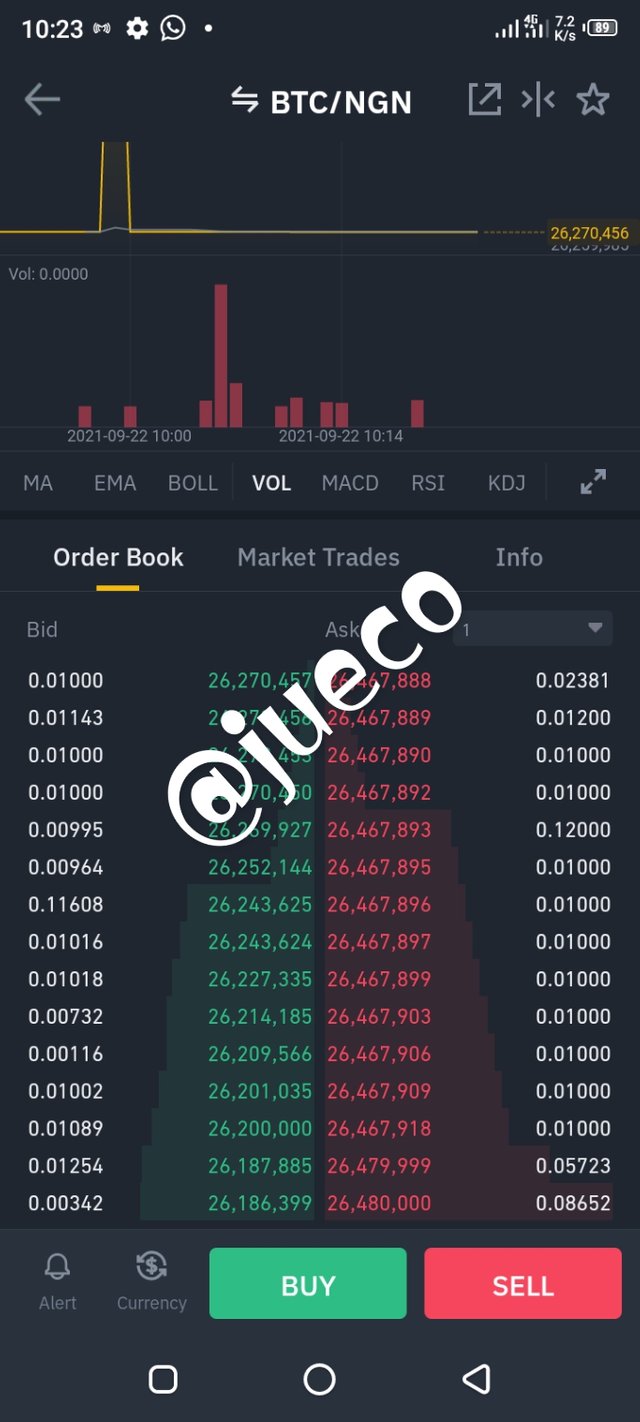
SCREENSHOT FROM BINANCE
From the above screenshot, we can deduce the following
PRICE:
An order book shows the bid price and ask price of a commodity in the market and we can see them in the above screenshot.THE BID SIDE:
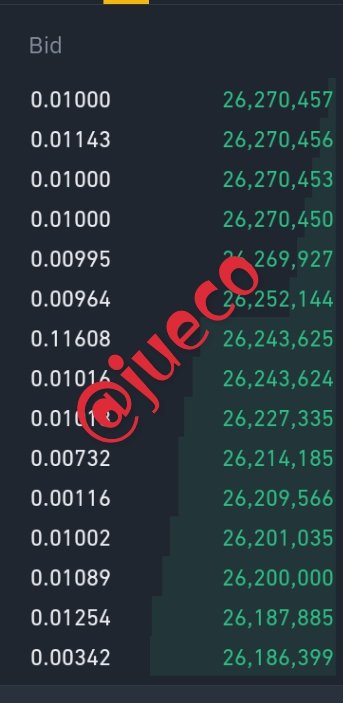
SCREENSHOT FROM BINANCE
The bid side is usually the side with the green color and this consist of the information of the buy order of a commodity.
The bid side is sometimes called the buyer's side, and this is so because the buyers bid for a particular number of a commodity at a given/fixed price.
The prices on the bid side are usually read from the top of the order book to the bottom.
Not only are the prices read from top to bottom, their orders are also taken in such manner
- THE ASK SIDE:
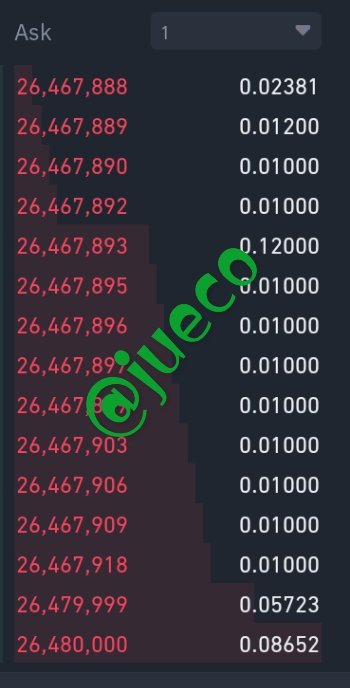
SCREENSHOT FROM BINANCE
The ask side is the side with red colour and it consists of information of the sell orders of a commodity.
The ask side is also known as the seller's side as the sellers ask for specific prices to sell their stock.
The prices on the ask side are usually read from bottom of the order book to the top of the order book, that is , they are ready from the lowest price to the highest price, and the orders are also executed in such manner.
Indeed, the order book is very important, it assists in the following way:
- It helps to show an updated buy and sell list of a market
- It helps in the increment of the understanding of traders on the trends of a market.
- It helps in the analysis of the nature of the market
Also, it is important to note the following about an order book
- All orders on the order book are pending orders
- These pending orders will only be executed when the set price is reached
- The pending orders can also be nullified, this can be done either by the user or the exchange itself.
There's also a chart known as Depth chart
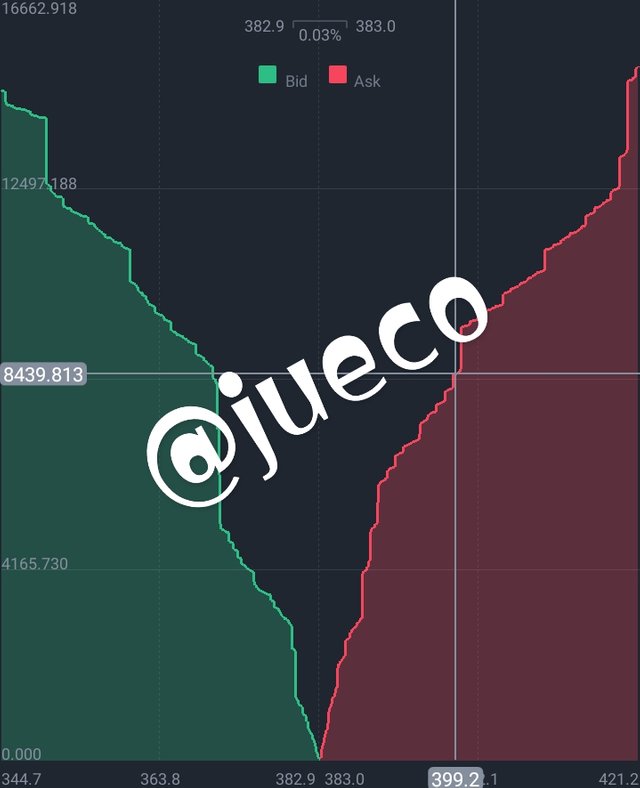
SCREENSHOT FROM BINANCE
The depth chart graphically summarizes and indicates the supply and demand of a market.
In the chart, the x-axis is represented by the price and the y-axis is represented by the amount.
The presence of the sell wall and buy wall is the easiest information to be found on the depth chart.
A buywall is formed when numerous orders are placed to purchase a certain stock at a given price.
The sell wall is created when numerous orders are placed to sell a stock at a given price in the market.
Having fulfilled this interesting and educative exploration, shall we proceed to the next adventure.
WHO ARE MARKET MAKERS AND MARKET TAKERS
A market maker sometimes called liquidity provider can be referred to as a person or a group of persons that quotes a sell price and a buy price over a given commodity in the market with the aim of profiting from the bid-ask spread.
Most market makers sometimes act as brokerage houses that creates trading services for trader/investors in an attempt to maintain the financial liquidity of a market.
The moment a market maker receives a buy order, they sell off their shares immediately inorder to execute the order and thus aid the flow of the market, also making buying and selling easier for traders.
We also have who we call market takers, the market takers are individuals who search for the liquidity of a market which is boosted by the regular presence of a tight bid-ask spread formed by the market makers.
The market takers have nothing to do with the execution of a market at the best offer/price, they execute transactions at the current price of the market.
DIFFERENCE BETWEEN MARKET MAKERS AND MARKET TAKERS
| MARKET MAKERS | MARKET TAKERS |
|---|---|
| They are creators of market | They are executors of market |
| They wait for the execution of orders | They execute orders created by market makers |
| They act as liquidity provider | They don't act as liquidity provider. |
In the screenshots below, I will be acting as a market maker by placing a buy and sell limit order on the pair ADA/USDT.
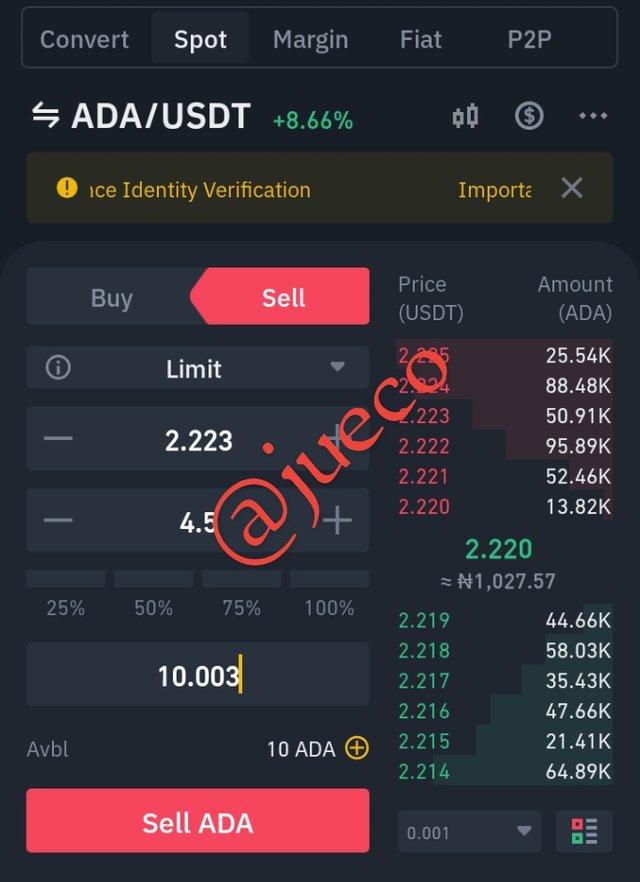
PLACING A SELL LIMIT ORDER
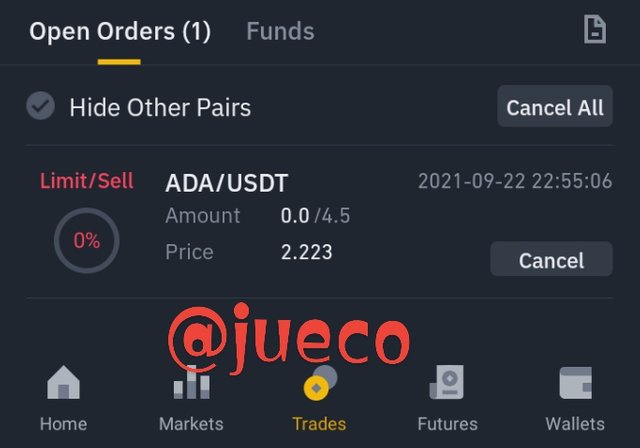
OPENING A SELL LIMIT ORDER
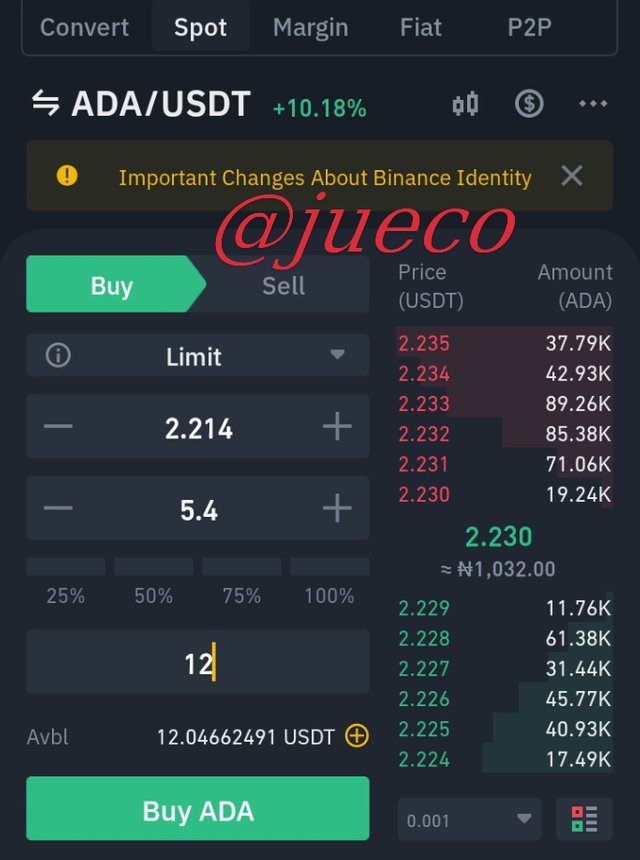
PLACING A BUY LIMIT ORDER
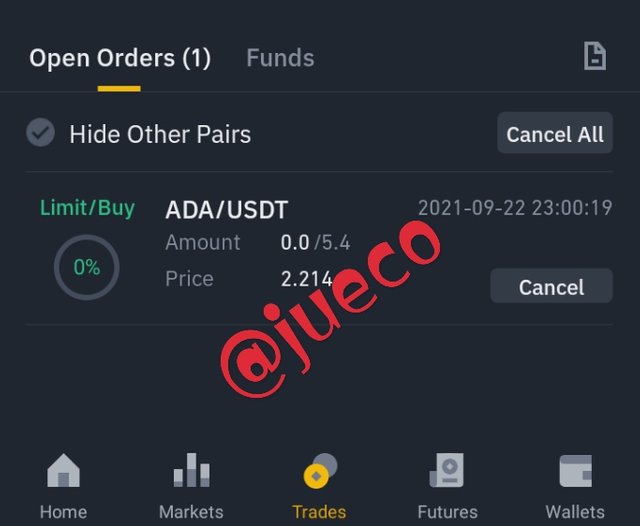
OPENING A BUY LIMIT ORDER
Again below, I will be acting as a market taker by placing a buy and sell market order of the pair ADA/USDT
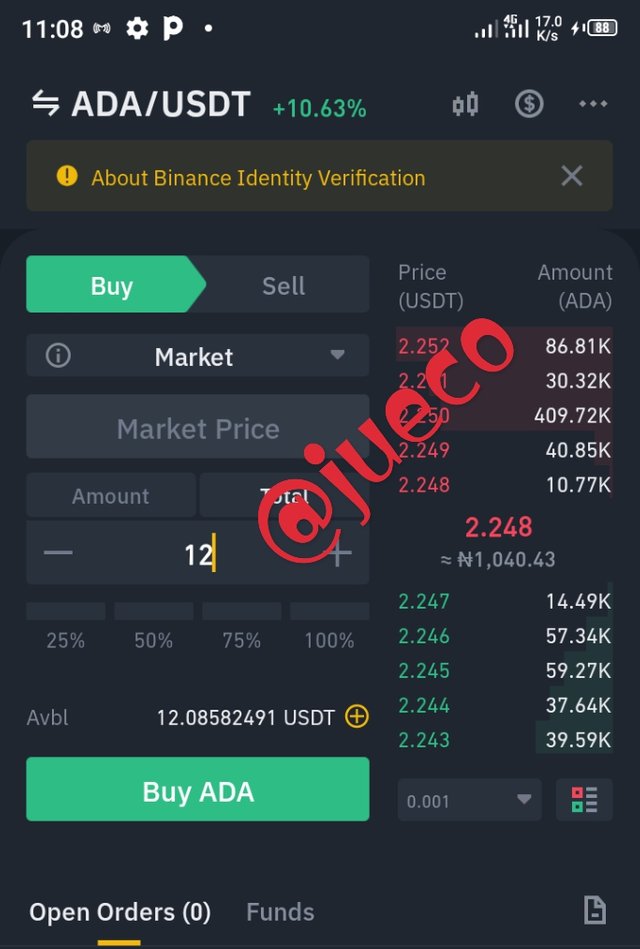
PLACING A BUY MARKET ORDER
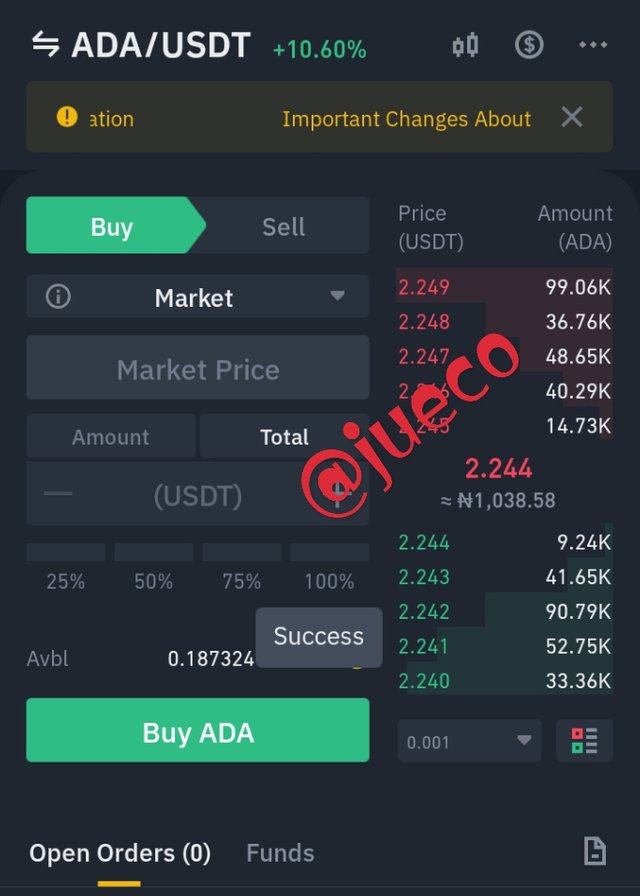
COMPLETE MARKET ORDER

COMPLETED ORDER
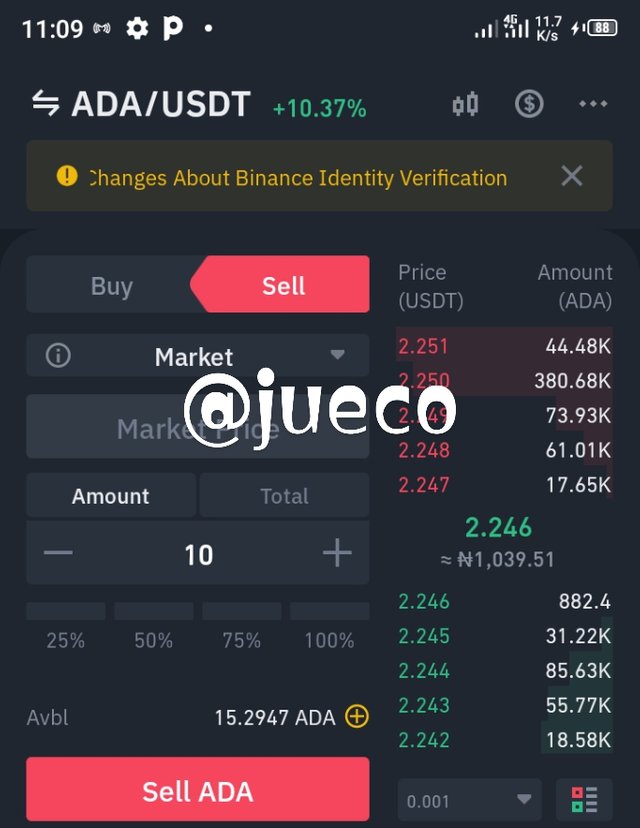
PLACING A SELL MARKET ORDER
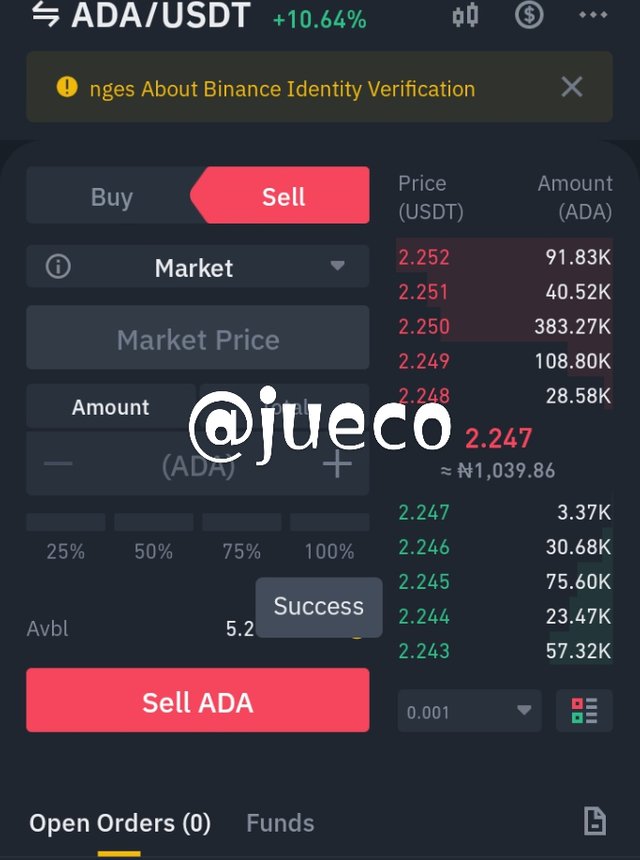
Screenshot from binance

COMPLETED ORDER
Having gone through this wonderful practicals, shall we, without wasting time proceed to the next task
WHAT IS A MARKET ORDER AND A LIMIT ORDER
To provide answer to this question, I will hit the nail to the head by going straight to the point.
A market order may be described as an order/instruction to purchase a commodity at the market's current most preferred available price.
A market order does not assure specific price for a commodity but it does guarantees the execution of a trade.
The immediate execution of a trade is the primary aim of a market order.
For example, when I call my broker and instructs him to buy me 30shares of stock, without giving him the price to buy them, my broker will initiate the trade as a market order and will get 30shares of that stock as instructed but he will get it at at the current market price of that commodity as of when the order was filled.
In a market order, the price you accepted to purchase a stock may not be the actual price you'll end up paying for that stock, this happens due to the high rate of Slippage of a market.
Market orders should be placed by traders only during market hours, if otherwise done, the order will be filled when the market reopens.
Having discussed this, shall we proceed to the other type of order known as limit order.
A limit order may be described as an order to fulfill a trade at a price that is more favourable than the current market price.
A limit order can only be filled at the price placed by the trader.
By placing a limit order, a trader is saying that he is not willing to buy a commodity at any other prices above a desired chosen price and that he is not willing to sell a given commodity at any price below a certain price.
An example of a buy limit order is explained below;
If the market price of a commodity is $30 and a trader is willing to pay only $20 for that commodity, he can set a buy limit order of $20. Such an order will only be filled when the price of such a commodity declines to $20 or below.
Also, if the market price of a stock is $40 and a trader wants to sell at $50, he can place a sell limit order at $50, which will only be filled when the price climbs to $50 and above.
There's also another type of order known as STOP ORDER.
A stop order is an order given to purchase or sell a commodity at the price of the market only when the price of such commodity has gotten to a fixed price (stop price).
A stop price can be used when the price of a commodity you own has increased a lot and you want to secure your profit if incase the price should drop.
DIFFERENCES BETWEEN A LIMIT ORDER AND A MARKET ORDER
| LIMIT ORDER | MARKET ORDER |
|---|---|
| It is mostly used by market makers | It is used by market takers |
| It's execution takes place at a specified price | It execution takes place at the current price of the market |
| It orders are not filled unless the fixed price is met | It orders are filled immediately. |
Shall we proceed to our next exploration by considering the next task
EXPLAIN HOW MARKET MAKERS AND MARKET TAKERS RELATE WITH THE TWO ORDER TYPES AND LIQUIDITY IN A MARKET
Actually, the pair goes like this; the market makers to limit order and market takers to market order.
As seen from our previous adventure, when I acted as a market maker, I made use of limit order to create market order, but when I acted as a market taker, I made use of market order to execute my transactions.
In other words, limit orders are usually initiated by market makers hereby providing liquidity to an asset and making the execution of market easy.
The market takers are the ones that initiates a market order, they are not concerned with limit order nor liquidity of a market.
A market taker is ready to purchase a good at a market price and sometimes this corresponds with the orders set by market makers.
Without any further ado, and with joy of heart, shall we proceed to the next level of our exploration
PLACE AN ORDER OF AT LEAST 1SBD FOR STEEM ON STEEMIT MARKET PLACE BY
A.) ACCEPTING THE LOWEST ASK. WAS IT INSTANT? WHY?
B.) CHANGING THE LOWEST ASK. EXPLAIN WHAT HAPPENS
A.) ACCEPTING THE LOWEST ASK. WAS IT INSTANT? WHY?
B.) CHANGING THE LOWEST ASK. EXPLAIN WHAT HAPPENS
Providing befitting answers to these wonderful questions is indeed an interesting task.
All screenshots used are gotten from my steemit wallet
(A)
The first thing to do is to visit your steemit wallet
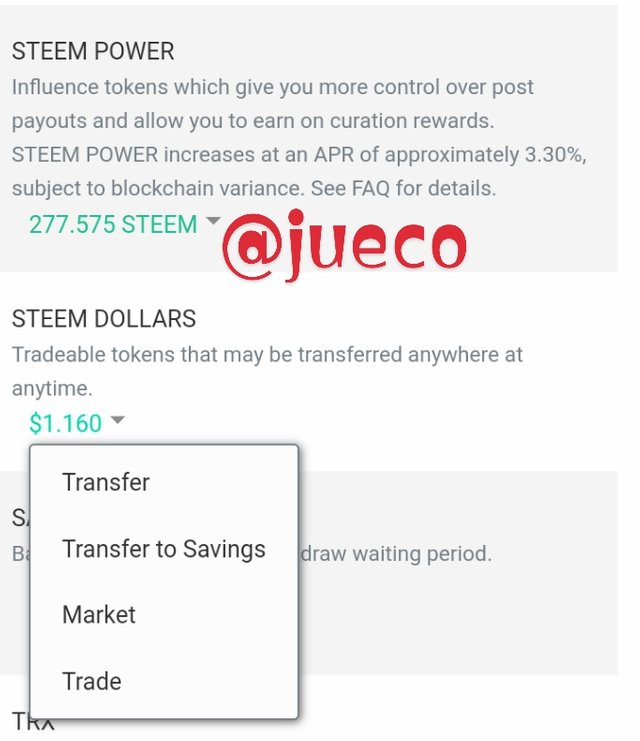
screenshot from my wallet
Then click on market and I accepted the lowest ask which is 0.082782 as seen below
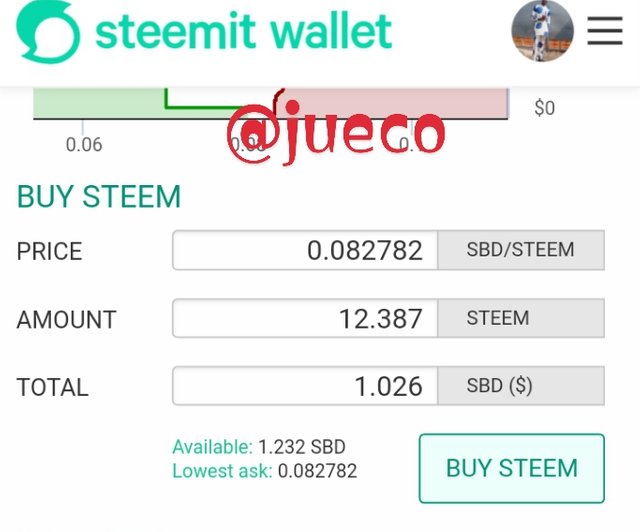
screenshot from my wallet
I then created the order and followed the procedures
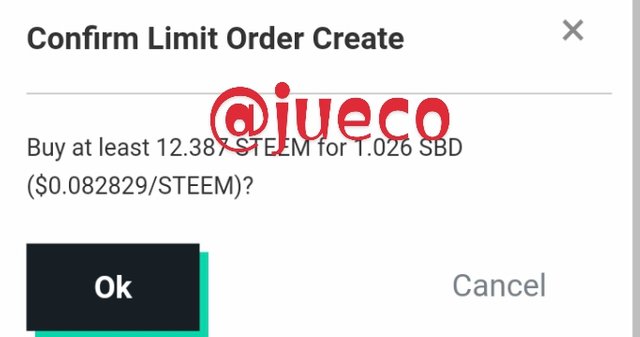
screenshot from my wallet
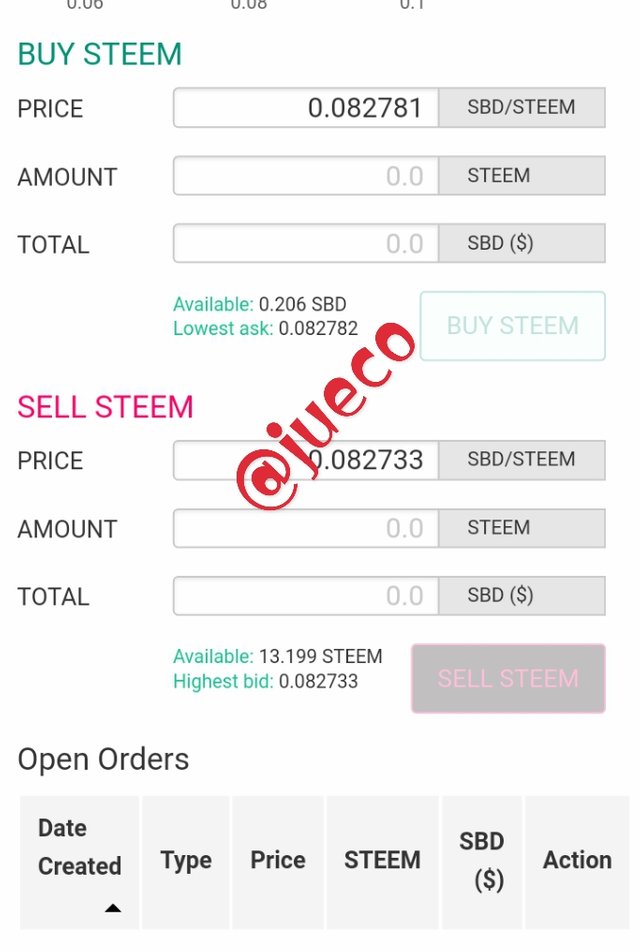 .
.
screenshot from my wallet
My transaction was instant and this is because the lowest ask that I accepted didn't change during the course of my transaction.
Below is my Screenshot of the filled order
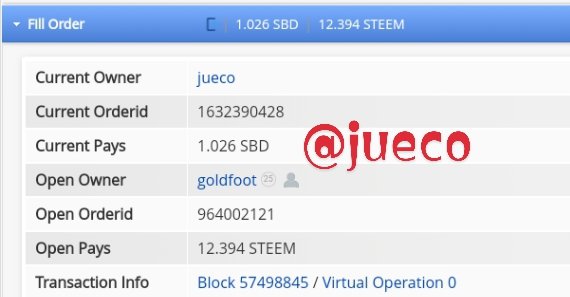
Source
I decided to reperform the task and this I did
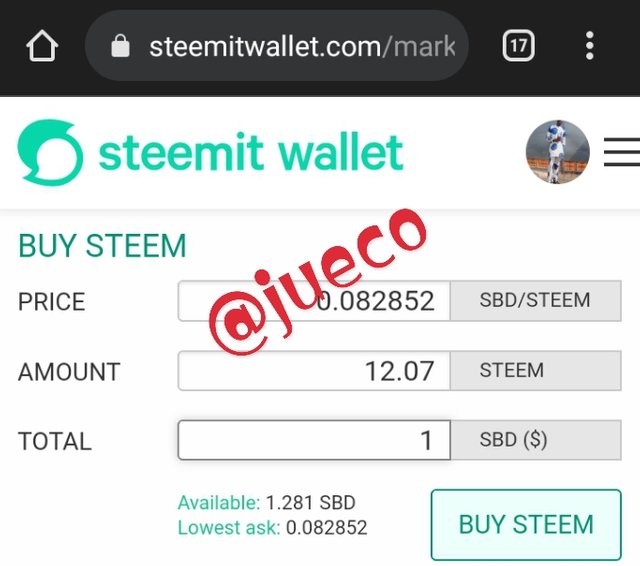
screenshot from my wallet
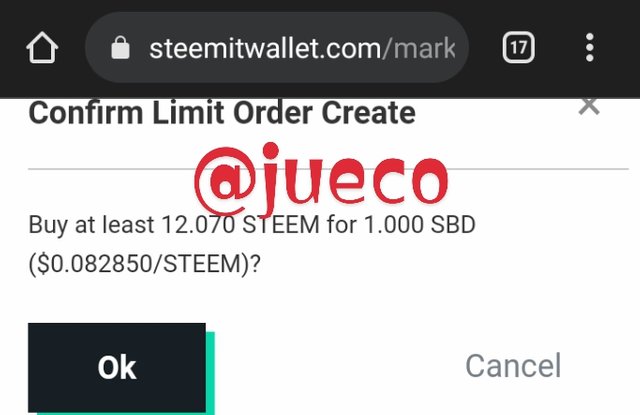
screenshot from my wallet
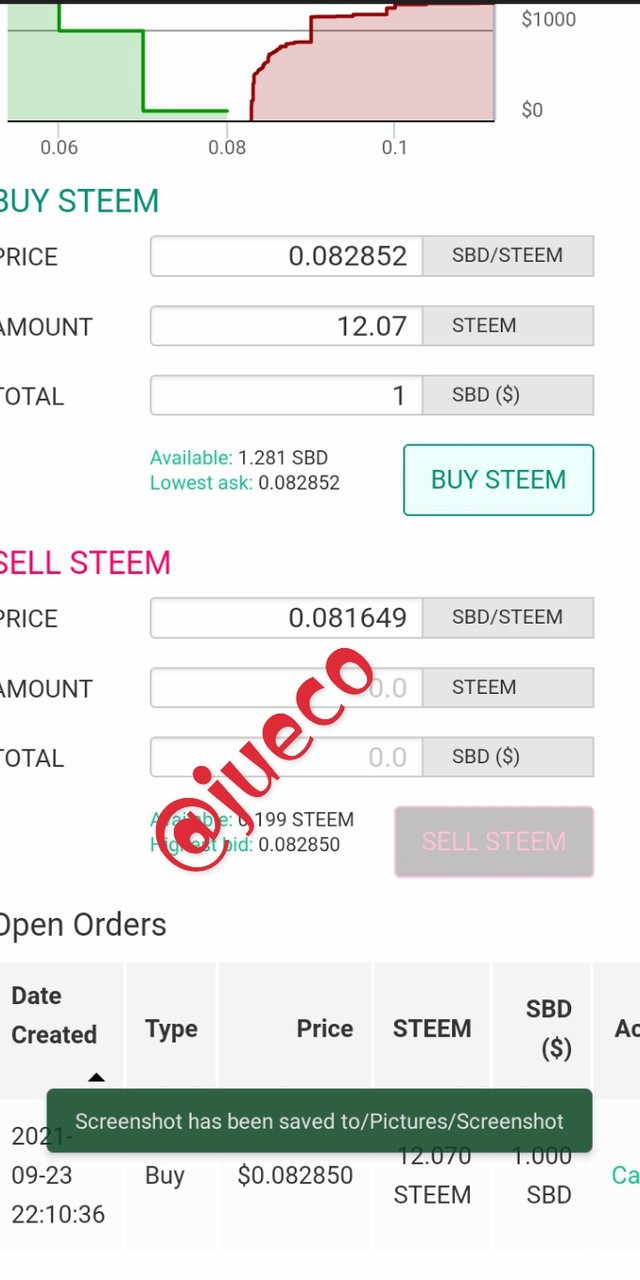 .
.
screenshot from my wallet
This time I notice that the transaction wasn't instant and this is due to the fact that the Askprice changed during the course of transaction.
Due to the fact that I wasn't instructed in the question to show a screenshot of the filled order like the next question did, I cancelled my order as it was taking time to be filled. And I have provided screenshot of the execution of the first practical.
Below is the screenshot of my cancelled order
(B)
Still logged in to my wallet, I decided to change the lowest ask of the transaction to 0.080733 and I then placed my order.
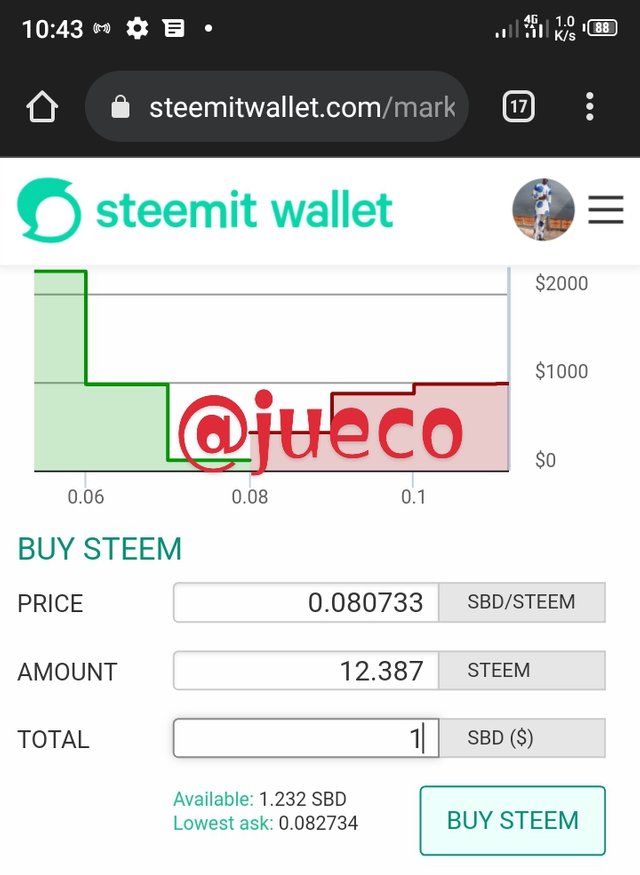
screenshot from my wallet
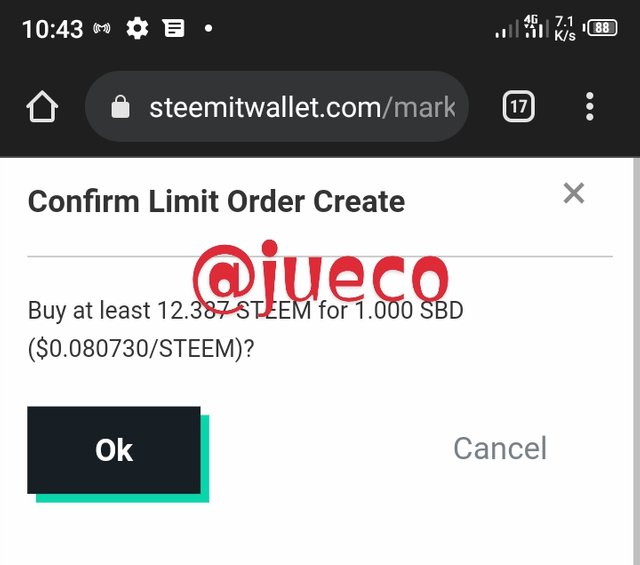
screenshot from my wallet
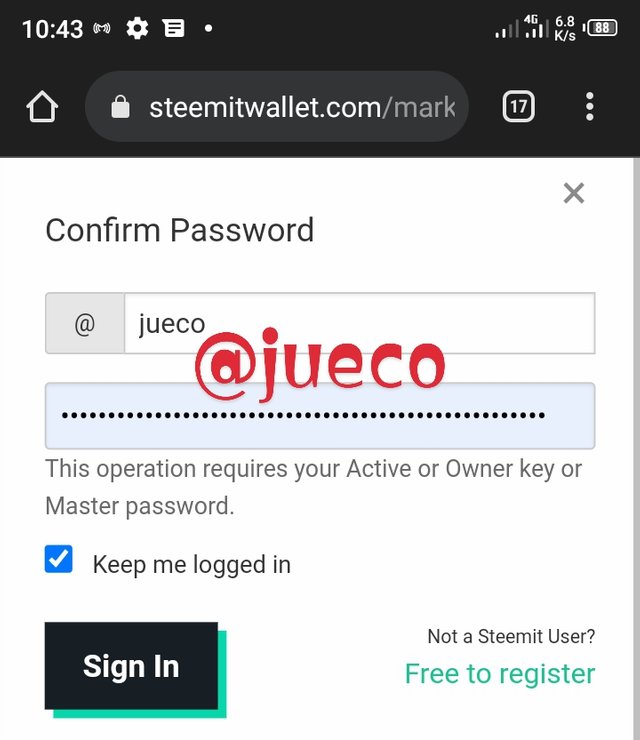
screenshot from my wallet
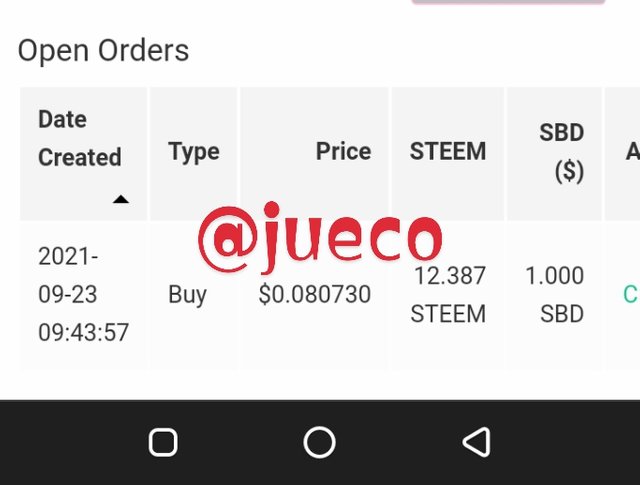
screenshot from my wallet
As highly expected, my transaction was not instant.
What i did by changing the lowest ask created an order in the order book indicating the price that I want my order to be executed.
The order can be seen above from the screenshot of the order book.
Not as an excuse though, I didn't make screenshot of the above as it wasn't indicated that I show it.
Yes, we have proudly fulfilled the necessary requirements for the above task, shall we make progress by moving to the next.
PLACE A TRX/USDT BUY LIMIT ORDER ON THE BINANCE EXCHANGE FOR AT LEAST $15. EXPLAIN YOUR STEPS AND THE IMPACT OF YOUR ORDER IN THE MARKET
To fulfill the necessity of this adventure, I visited my binance app and all screenshots are gotten from binance app.
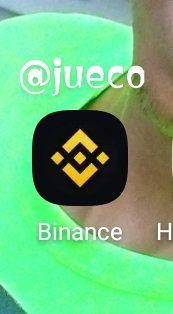

screenshot from binance
After it opened, I clicked on the search botton to search for the pair (TRX/USDT) and I placed a buy limit order of $15 which would give 154.1 TRX as of when the post was made, so I created the order.
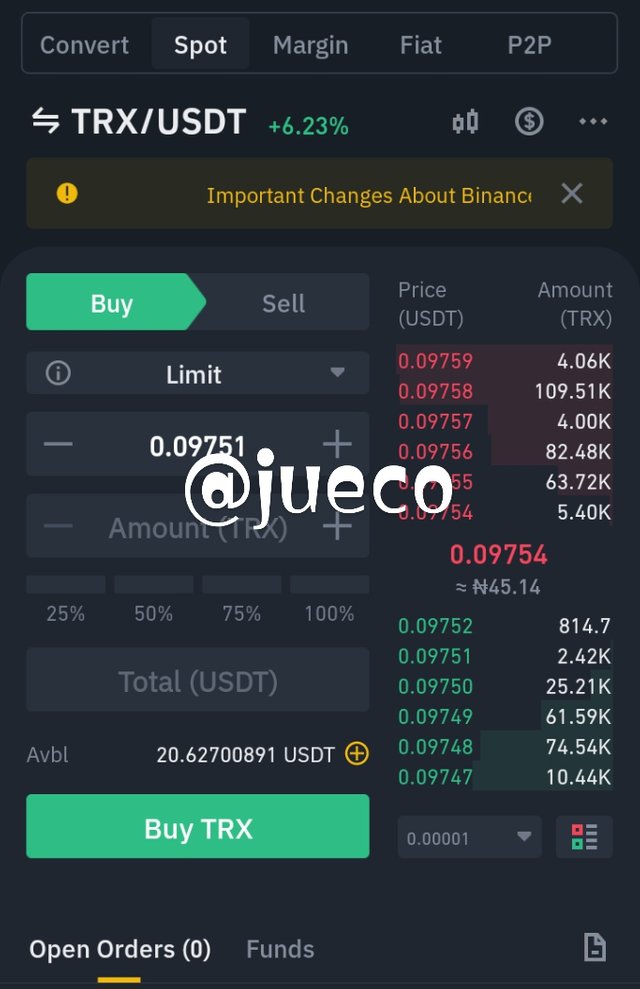
screenshot from binance
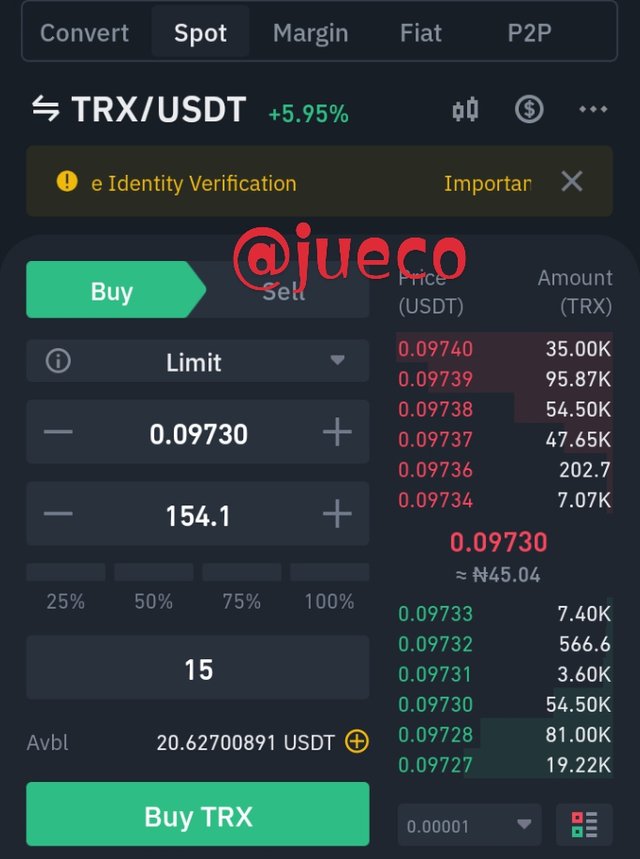
screenshot from binance
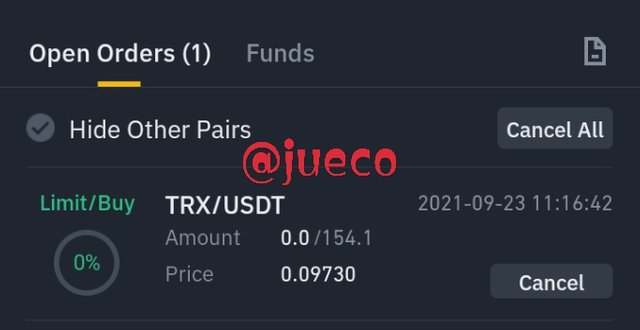
screenshot from binance
I waited for the transaction to be executed but it was taking time, so I cancelled the order and created a different one
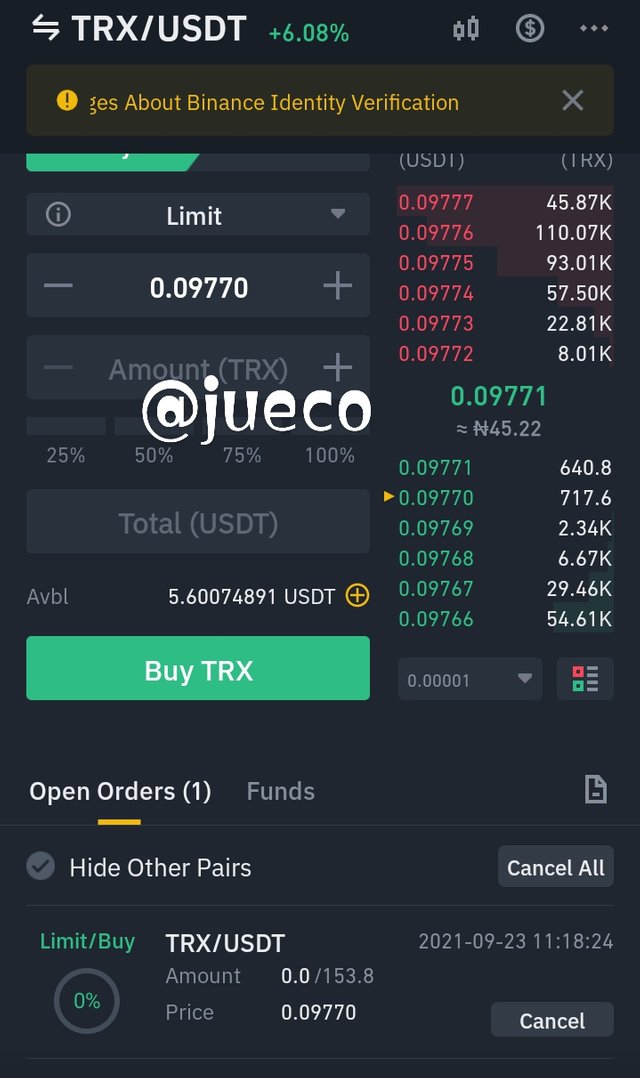
screenshot from binance
And fortunately for me , this one was filled at a faster rate.
Below is the screenshot of the two orders I created, the one I cancelled and the one that got filled
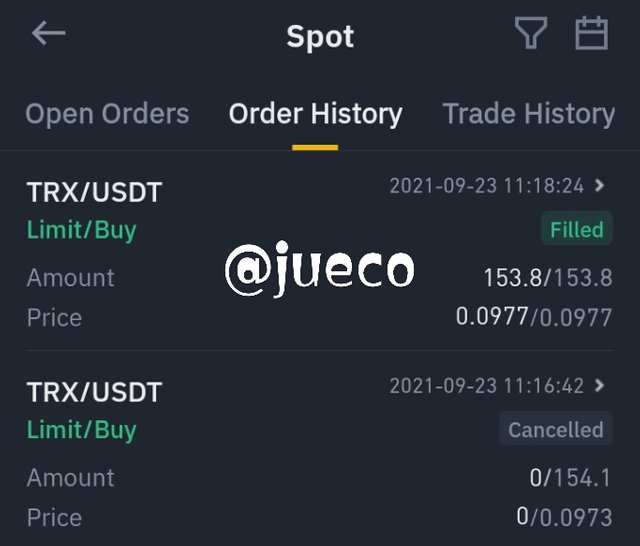
screenshot from binance
Yes, being a market maker, one of the effect our orders have on the market is that it makes the market liquid.
In the above trade, I acted as a market maker so my trade added to the liquidity of the market.
Having passed through that stage, shall we proceed to the next task
PLACE A TRX/USDT BUY MARKET ORDER ON THE BINANCE EXCHANGE FOR AT LEAST $15. EXPLAIN YOUR STEPS AND THE IMPACT OF YOUR ORDER IN THE MARKET
All screenshots are from binance
This task is related to the task we just performed, go to your binance, search for the currency pair
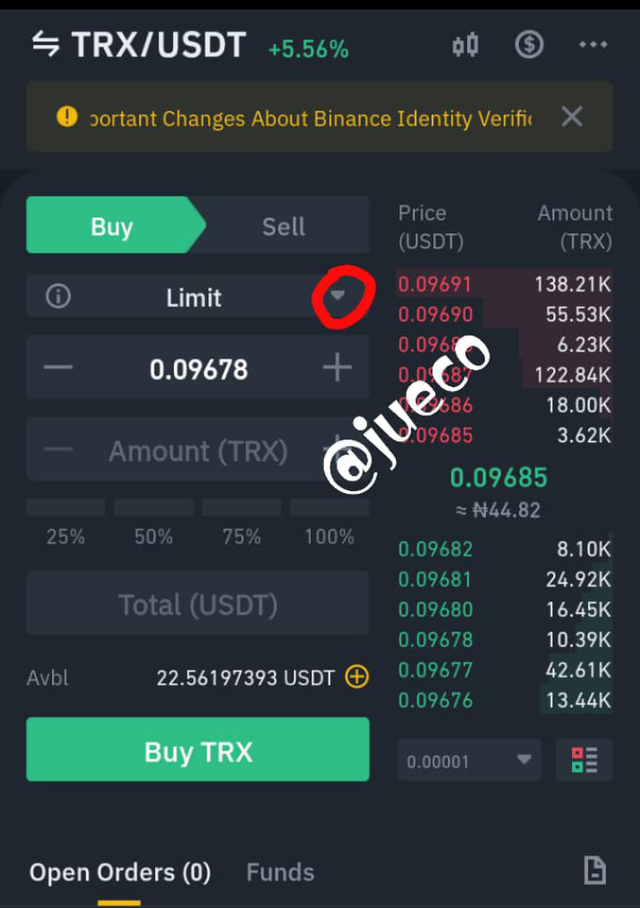
screenshot from binance
Click on the arrow to change the order type
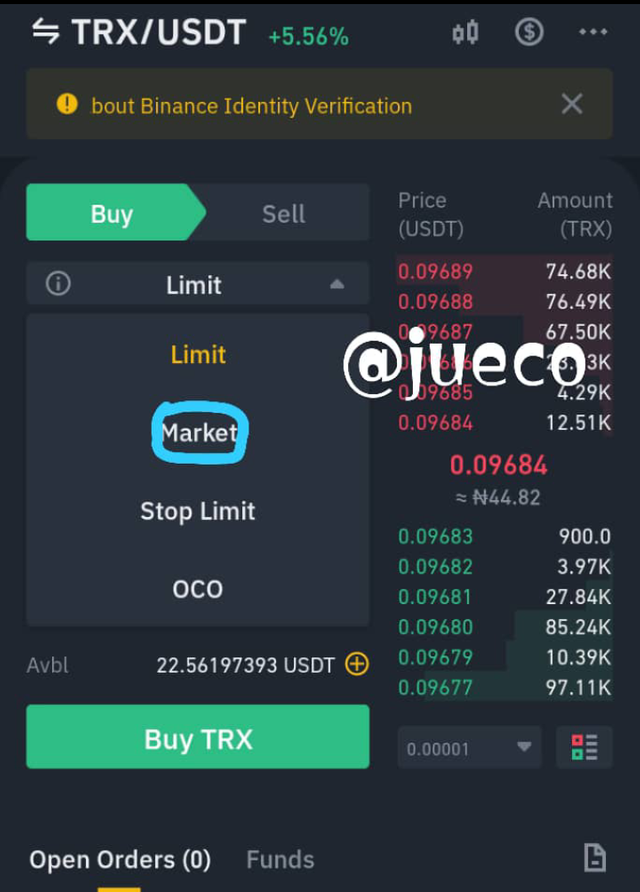
screenshot from binance
Then select market order and fill the necessary.
I placed an order of $15
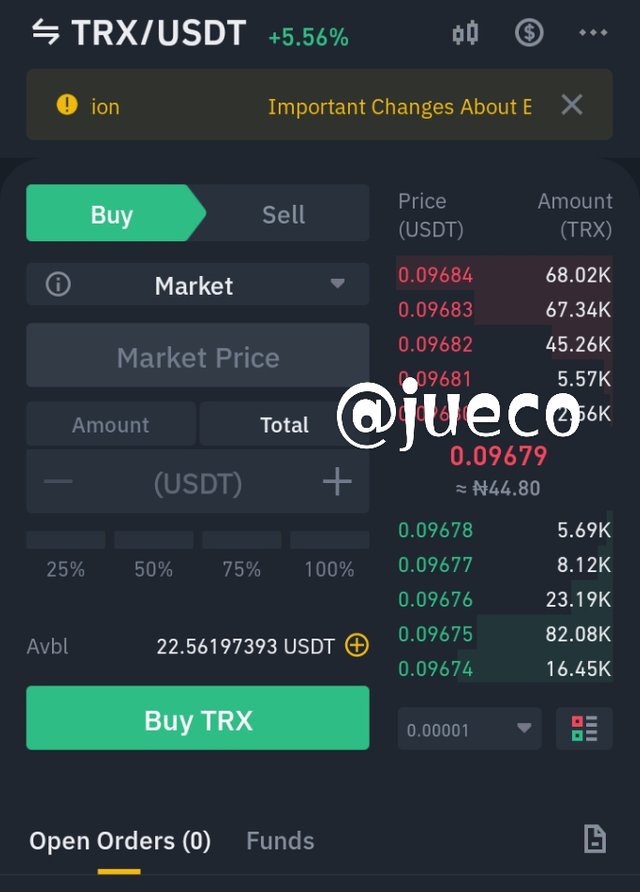
screenshot from binance
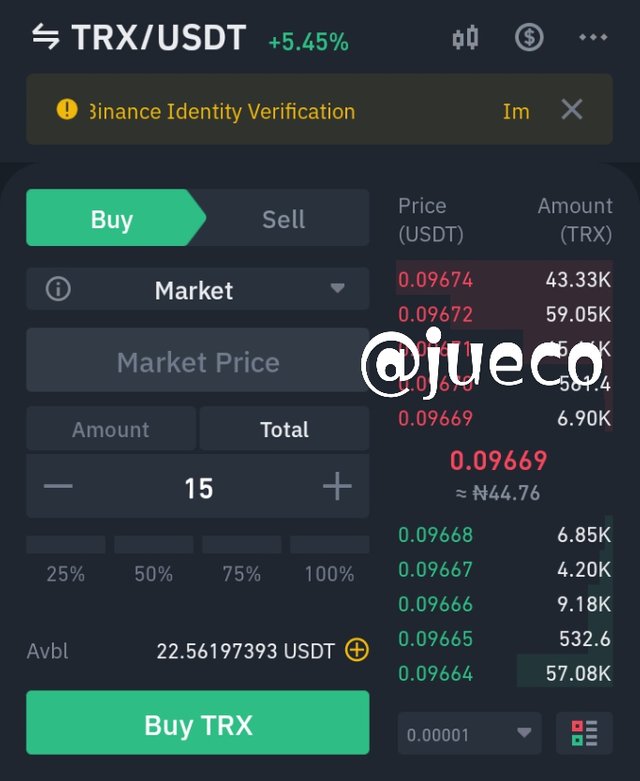
screenshot from binance
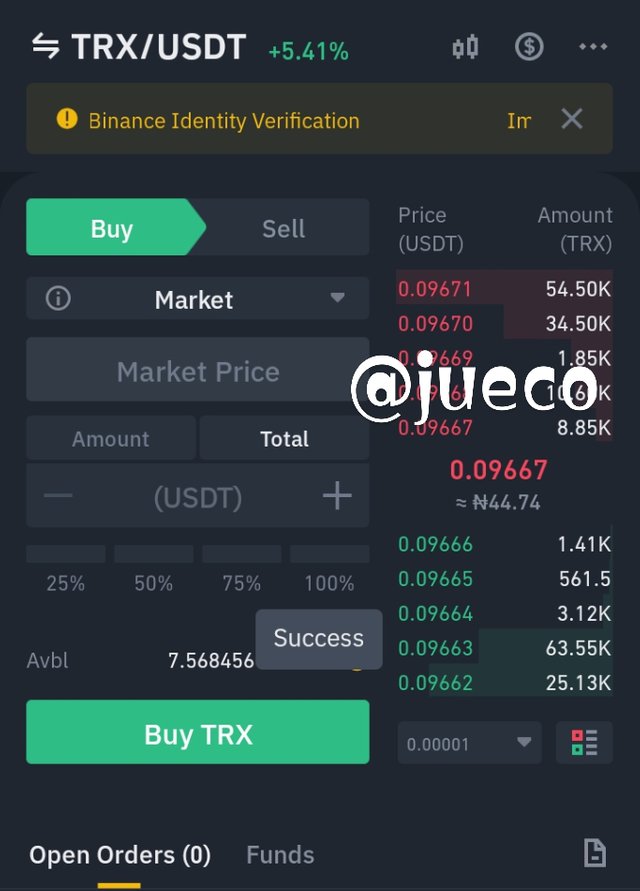
screenshot from binance
Here's is the execution of my order from the order book.
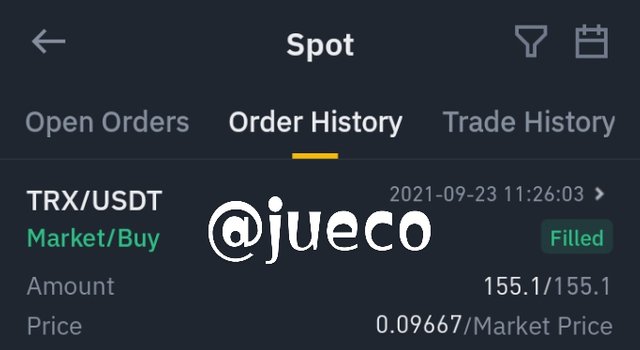
screenshot from binance
For me, I don't think my trade had a significant effect on the market, I will say it contributed to the smooth running of trading of the market.
With all pleasure, shall we proceed to the last part of our exploration.
TAKE A SCREENSHOT OF THE ORDER BOOK OF ADA/USDT PAIR FROM BINANCE ON THE DAY YOU ARE PERFORMING THIS TASK. TAKE NOTW OF THE HIGHEST BID AND LOWEST ASK PRICES
(A)
CALCULATE THE BID ASK
(B)
CALCULATE THE MID-MARKET PRICE
(A)
CALCULATE THE BID ASK
(B)
CALCULATE THE MID-MARKET PRICE
We shall begin this adventure with a screenshot of the order book of ADA/USDT from binance.
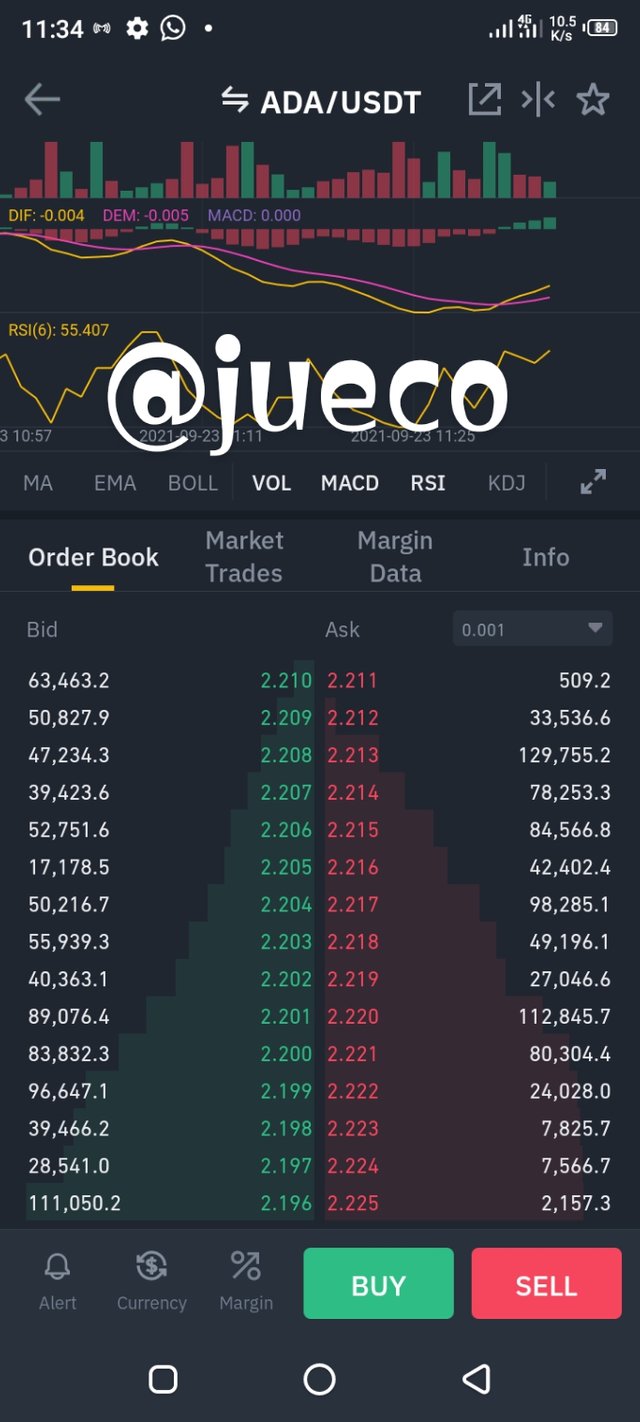
screenshot from binance
From our previous class, we learnt how to calculate Bid-ask spread of which I later revised at the beginning of this assignment.
Bid-ask spread= Askprice-Bidprice
From the screenshot above, the lowest price on the ask side being my lowest ask is 2.211
And my highest bid from the bid side is 2.210
So therefore, Bid-ask spread= 2.211–2.210 = 0.001.
Let's use this opportunity to calculate our percentage spread, hope we can recall the formula
%spread = spread/Askprice×100
= 0.001/2.211×100
= 0.045% approximately 0.05%.
(B)
To calculate MID-MARKET price, we use [Askprice+Bidprice]/2
Mid-market price = [2.211+2.210]/2
=2.2105USDT.
CONCLUSION
If we noticed carefully, we would realised that there are slight differences in the above screenshots I gave for my transactions.
This differences is due to the high rate of price fluctuations and we otherwise call it Slippage and it can be controlled by making use of a stop limit.
I sincerely appreciate Prof @awesononso for this interesting topic, I look forward to learning from you again Prof.
My comment box is open to all who have an additional comments to make or a suggestion.
Please feel free to visit
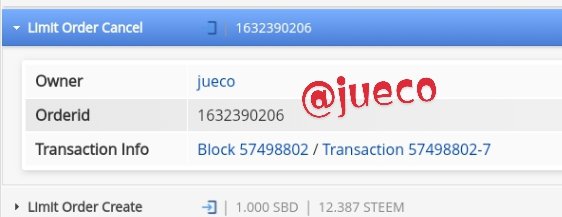
Hello @jueco
Brother Can you please tell me how to add colour to your text?